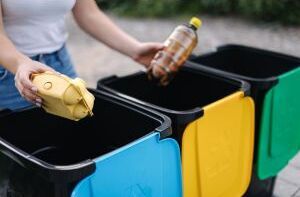How to Choose the Right Size Recycling Bin for Your Workplace
Choosing the right size recycling bin for your workplace might seem straightforward, but selecting the wrong size can lead to overflowing waste, poor hygiene, or underused systems. Whether you're outfitting a small office or a multi-storey building, the right bin size plays a critical role in keeping your recycling system efficient and user-friendly.
Here’s how to make the right decision for your New Zealand workplace.
1. Estimate Waste Volume by Stream
Before choosing a recycling bin size, assess how much of each type of recyclable your office generates — paper, plastics, cans, organics, etc. Offices with more printing will need larger paper bins, while shared kitchens may require bigger compost or soft plastic bins.
Tip: A quick waste audit over one week can help estimate volumes more accurately.
2. Match Bin Size to Traffic and Location
High-traffic areas like kitchens, breakrooms, and entryways need larger or more frequently emptied bins, while smaller desk-side bins may be sufficient for paper waste.
As a general guide:
-
15–25L: Desk-side or personal bins (ideal for paper)
-
60–80L: Shared office zones or small kitchens
-
120–240L: Communal kitchens, lobbies, and open-plan spaces
-
660L+ wheelie bins: Back-of-house or large commercial buildings
3. Consider Emptying Frequency
If you have daily cleaning services, smaller bins may suffice. But for offices with weekly cleaning, larger bins help prevent overflow, odour, and mess.
Pro Tip: It's more hygienic to slightly oversize your bins than risk overflow.
4. Don’t Ignore Bin Height and Accessibility
In offices with diverse users, consider the physical height and opening mechanism of the bin. Flip lids, touchless sensors, or front-facing hatches may be more user-friendly than top-loading units, especially in high-traffic or accessibility-conscious spaces.
5. Choose Consistency in Design
While size can vary based on use, aim to use similar styles and colours to reinforce stream recognition and simplify cleaning. Consistency in look and placement encourages better recycling habits.
For a complete walkthrough on how to set up a successful recycling system in your office, check out our article: Workplace Recycling Made Simple: A Step-by-Step Setup Guide. It outlines everything from assessing your waste streams to bin placement, signage, and team engagement — perfect for Kiwi businesses starting or improving their recycling efforts.
6. Scale for Growth
If your business is expanding, plan ahead. Choose modular bins or units that can be scaled up without replacing the entire system.
Even with the best intentions, many New Zealand workplaces make common recycling bin mistakes that lead to contamination and wasted effort. From incorrect labelling to using the wrong liners, these slip-ups can undermine your sustainability efforts. To learn what to watch out for and how to fix it, read our article: Recycling Bin Mistakes NZ Workplaces Often Make – And How to Fix Them.
Conclusion
Selecting the right recycling bin size for your workplace ensures efficiency, cleanliness, and improved participation in recycling efforts. It's not just about fitting a space — it’s about supporting your sustainability goals while making life easier for staff.
Explore Insinc’s full range of commercial recycling bins and accessories — designed to suit any New Zealand workplace size and recycling need.
https://www.insinc.co.nz/category/recycle-bins.html
Posted: Thursday 30 October 2025



